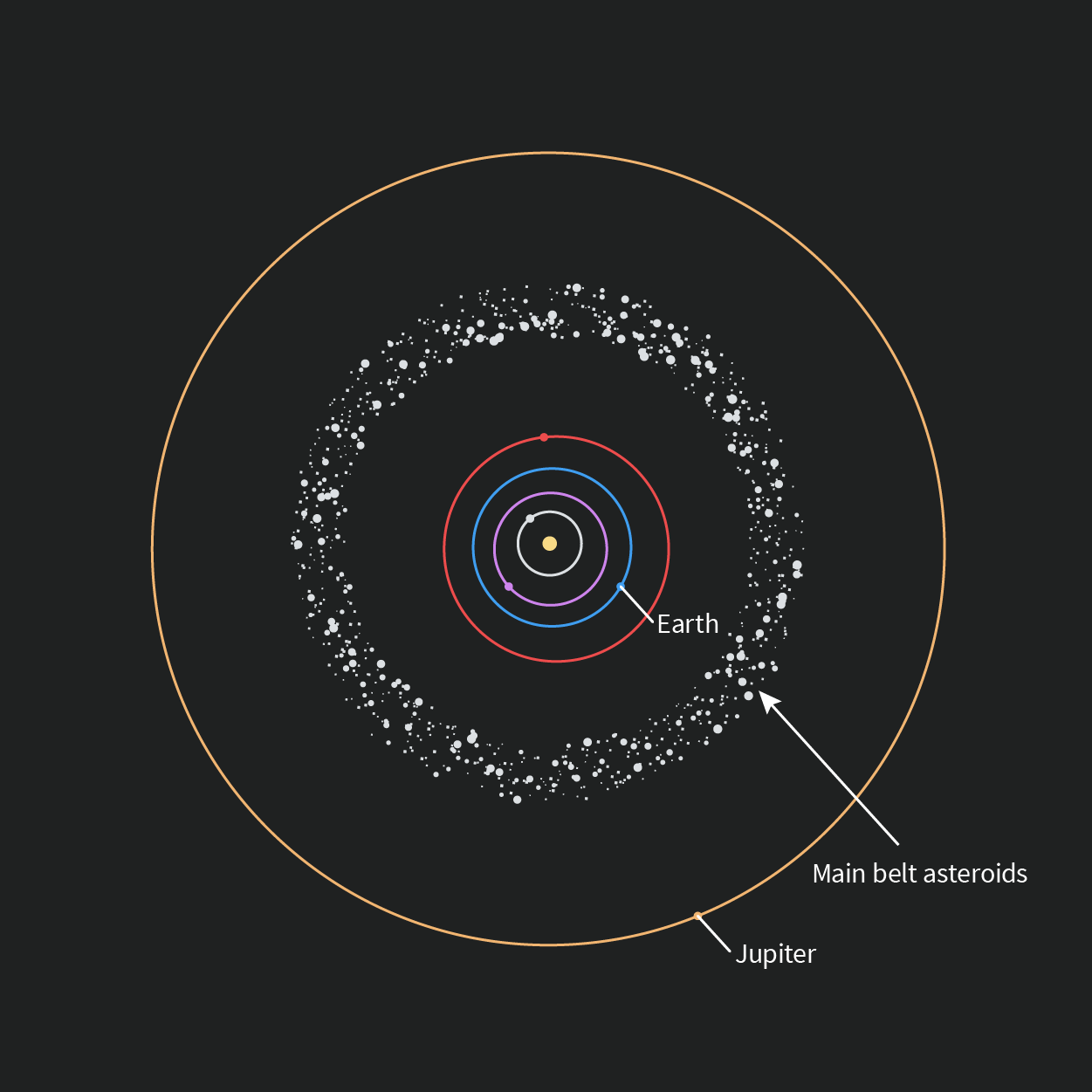The Big View of the Solar System
Rubin Observatory will discover millions of new Solar System objects, and will provide an enormous data set that gives us a more comprehensive view of the objects’ distribution. The more we know about the distribution and properties of objects in our Solar System, the more we understand about how it formed.
Most small Solar System objects we have discovered can be classified into four groups:
- Near-Earth objects (NEOs) - Objects whose orbits intersect or get very close to the orbit of Earth.
- Main Belt asteroids (MBAs) - Objects that orbit the Sun between the orbits of Mars (1.5 au) and Jupiter (5.2 au).
- Trans-Neptunian objects (TNOs) - Objects with an orbital size of 30 au or larger. Typically TNOs orbit beyond Neptune, however some may periodically come closer to the Sun than Neptune.
- Comets - Icy objects found throughout the Solar System. When orbiting close to the Sun, they develop a head and a tail formed by escaping gas and dust.

Please answer all questions before continuing to the next page.
